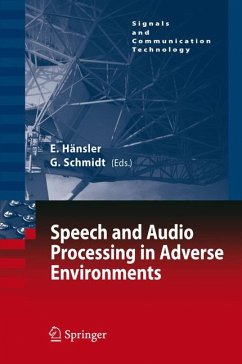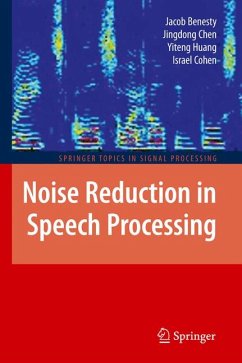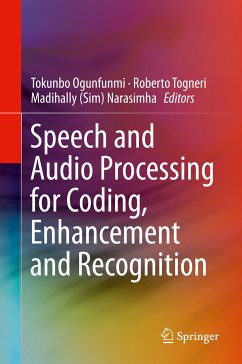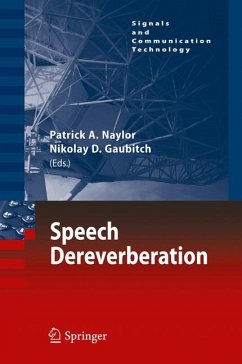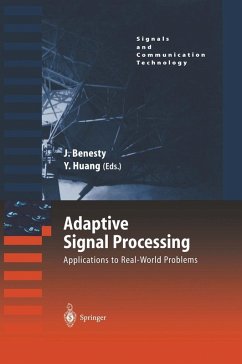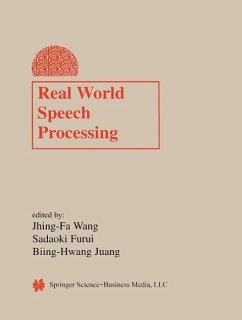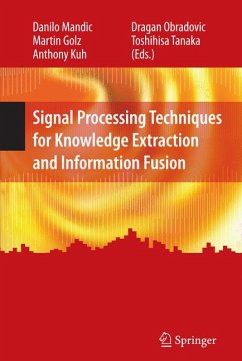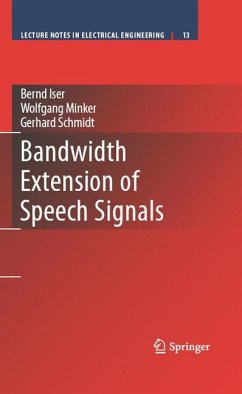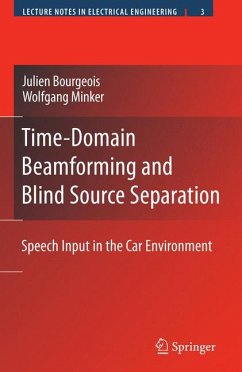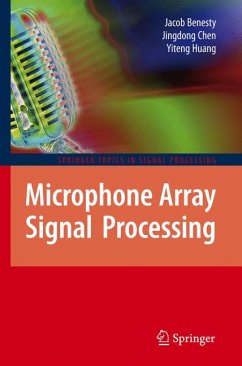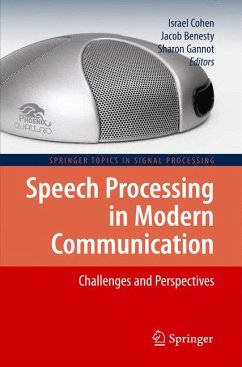
Speech Processing in Modern Communication (eBook, PDF)
Challenges and Perspectives
Redaktion: Cohen, Israel; Gannot, Sharon; Benesty, Jacob
Versandkostenfrei!
Sofort per Download lieferbar
112,95 €
inkl. MwSt.
Weitere Ausgaben:

PAYBACK Punkte
56 °P sammeln!
Modern communication devices, such as mobile phones, teleconferencing systems, VoIP, etc., are often used in noisy and reverberant environments. Therefore, signals picked up by the microphones from telecommunication devices contain not only the desired near-end speech signal, but also interferences such as the background noise, far-end echoes produced by the loudspeaker, and reverberations of the desired source. These interferences degrade the fidelity and intelligibility of the near-end speech in human-to-human telecommunications and decrease the performance of human-to-machine interfaces (i....
Modern communication devices, such as mobile phones, teleconferencing systems, VoIP, etc., are often used in noisy and reverberant environments. Therefore, signals picked up by the microphones from telecommunication devices contain not only the desired near-end speech signal, but also interferences such as the background noise, far-end echoes produced by the loudspeaker, and reverberations of the desired source. These interferences degrade the fidelity and intelligibility of the near-end speech in human-to-human telecommunications and decrease the performance of human-to-machine interfaces (i.e., automatic speech recognition systems).
The proposed book deals with the fundamental challenges of speech processing in modern communication, including speech enhancement, interference suppression, acoustic echo cancellation, relative transfer function identification, source localization, dereverberation, and beamforming in reverberant environments.
Enhancement of speech signals is necessary whenever the source signal is corrupted by noise. In highly non-stationary noise environments, noise transients, and interferences may be extremely annoying. Acoustic echo cancellation is used to eliminate the acoustic coupling between the loudspeaker and the microphone of a communication device. Identification of the relative transfer function between sensors in response to a desired speech signal enables to derive a reference noise signal for suppressing directional or coherent noise sources. Source localization, dereverberation, and beamforming in reverberant environments further enable to increase the intelligibility of the near-end speech signal.
The proposed book deals with the fundamental challenges of speech processing in modern communication, including speech enhancement, interference suppression, acoustic echo cancellation, relative transfer function identification, source localization, dereverberation, and beamforming in reverberant environments.
Enhancement of speech signals is necessary whenever the source signal is corrupted by noise. In highly non-stationary noise environments, noise transients, and interferences may be extremely annoying. Acoustic echo cancellation is used to eliminate the acoustic coupling between the loudspeaker and the microphone of a communication device. Identification of the relative transfer function between sensors in response to a desired speech signal enables to derive a reference noise signal for suppressing directional or coherent noise sources. Source localization, dereverberation, and beamforming in reverberant environments further enable to increase the intelligibility of the near-end speech signal.
Dieser Download kann aus rechtlichen Gründen nur mit Rechnungsadresse in A, B, BG, CY, CZ, D, DK, EW, E, FIN, F, GR, HR, H, IRL, I, LT, L, LR, M, NL, PL, P, R, S, SLO, SK ausgeliefert werden.




